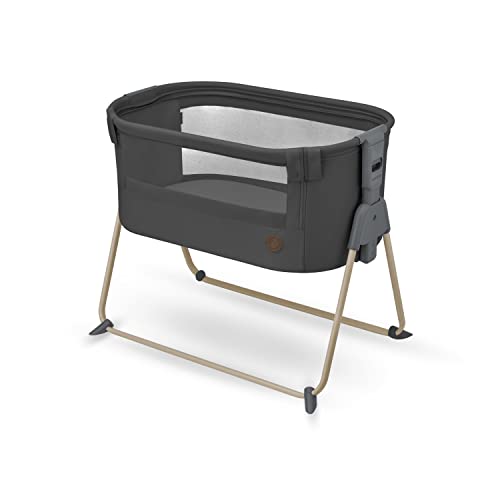The Benefits and Considerations of Bedside Cots for Co-Sleeping
Co-sleeping has actually emerged as a popular option for numerous new parents who seek to maintain close distance to their infants during the night. Along with standard co-sleeping practices, bedside cots are acquiring traction as an alternative that uses both the convenience of nearness and the safety of separate sleeping spaces. This article intends to explore the idea of bedside cots for co-sleeping, highlighting their benefits, possible drawbacks, tips for choice, and common concerns.
Comprehending Bedside Cots
Bedside cots, likewise referred to as side-sleepers or co-sleepers, are specifically created cribs that are attached to the side of the parents' bed. They allow parents to preserve easy access to their infants in the evening while offering a separate sleeping area that can improve security and comfort.
Functions of Bedside Cots
- Size and Design: Bedside cots are frequently smaller than standard cribs however still offer adequate room for an infant. The majority of designs have adjustable heights to match the bed.
- Side Panels: Many models feature removable or mesh side panels that permit safe visual monitoring of the baby, boosting parents' capability to react to their baby's requirements quickly.
- Stability and Safety: Bedside cots are constructed with stability in mind, including security anchors or straps that secure the cot to the moms and dad's bed.
- Ease of Access: Parents can quickly reach over to comfort or feed their baby without having to rise, facilitating nighttime breastfeeding or soothing.
Advantages of Using Bedside Cots for Co-Sleeping
- Improved Bonding: Proximity to the baby cultivates emotional connection and bonding, which is vital during the early phases of development.
- Easier Nighttime Care: Nighttime feeding and reassuring ended up being considerably easier with a bedside cot, as parents can just lean over to address their baby's needs.
- Increased Safety: Bedside cots minimize the threat of suffocation or unexpected rolls that can take place with conventional co-sleeping directly in the adult bed.
- Individual Sleep Space: The documentation supports that having their own sleeping space can assist infants sleep better in terms of fewer disturbances from parents.
- Transitioning: A bedside cot can be a handy transitional tool as babies grow and start to move to their own rooms.
| Function | Benefits |
|---|---|
| Boosted Bonding | Closer physical existence |
| Easier Access | Quick response to needs |
| Increased Safety | Reduced danger of mishaps |
| Private Space | Less disturbance during the night |
| Simplified Transition | Easier relocate to independent sleeping |
Factors to consider Before Choosing a Bedside Cot
While bedside cots provide numerous advantages, possible users ought to consider the list below aspects:
- Size of Bed: Ensure that the cot fits adjacent to the bed without triggering discomfort or overcrowding.
- Budget: Prices can differ significantly among various brand names and models, so consider spending plan restrictions carefully.
- Safety Standards: Check that the cot fulfills all safety policies to ensure it is devoid of hazardous products and includes necessary security functions.
- Product: Non-toxic finishes and products are most importantly crucial for infant health.
- Infant's Age and Weight: Some cots have weight limits, and parents need to pick appropriately based on their baby's development.
Tips for Selecting a Bedside Cot
- Read Reviews: Look for user feedback and security ratings.
- Look for Certifications: Ensure the cot adheres to security requirements.
- Inspect the Design: Choose a design that matches your bed room style while ensuring functionality.
- Think about Accessibility: Look for designs that enable easy reach however decrease the threat of presenting.
- Test Stability: Ensure that the cot is steady and secure when connected to the bed.
Common FAQs About Bedside Cots for Co-Sleeping
Q1: Are bedside cots safe for co-sleeping?
A1: When used properly, bedside cots are developed to offer a safe sleeping option for infants while enabling close proximity to parents. Constantly guarantee to protect the cot correctly to avoid motions that could result in mishaps.
Q2: At what age can I begin using a bedside cot?A2: Many parents begin utilizing bedside cots right after the baby is born. However, it is important to talk to a doctor regarding your infant's readiness for co-sleeping, specifically if they were born prematurely. Q3: Can I use a routine
crib for co-sleeping? A3: While routine cribs can be used, they do not offer the exact same level of availability and security as bedside cots, making bedside options more favorable for co-sleeping. Q4: What if my baby rolls over?A4: Most bedside cots are designed with security functions that decrease risks if a baby rolls. Furthermore,
they are usually low enough that a roll would not lead to a significant drop. Q5: How do I shift my baby from a bedside cot to a regular crib?A5: Gradually move your baby to a separate crib in their own room after they end up being familiar with oversleeping the bedside cot. Start with naps in the crib while keeping nighttime co-sleeping till they adapt. Bedside cots provide a useful and much safer alternative to direct co-sleeping, offering many advantages in regards to convenience and safety. They help with bonding
between infants and parents while lessening the risks associated with conventional co-sleeping practices. Parents looking for a method to keep their babies close in the evening should consider the advantages that bedside cots can use. With Cots 4 Tots of alternatives available, parents can create a safe and comfortable sleep environment that supports their family's distinct requirements.

